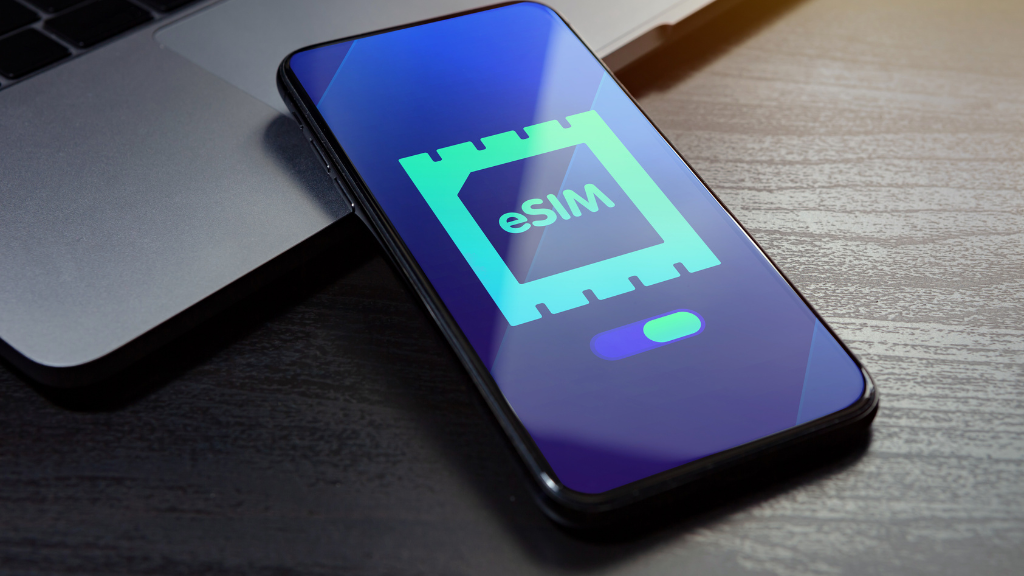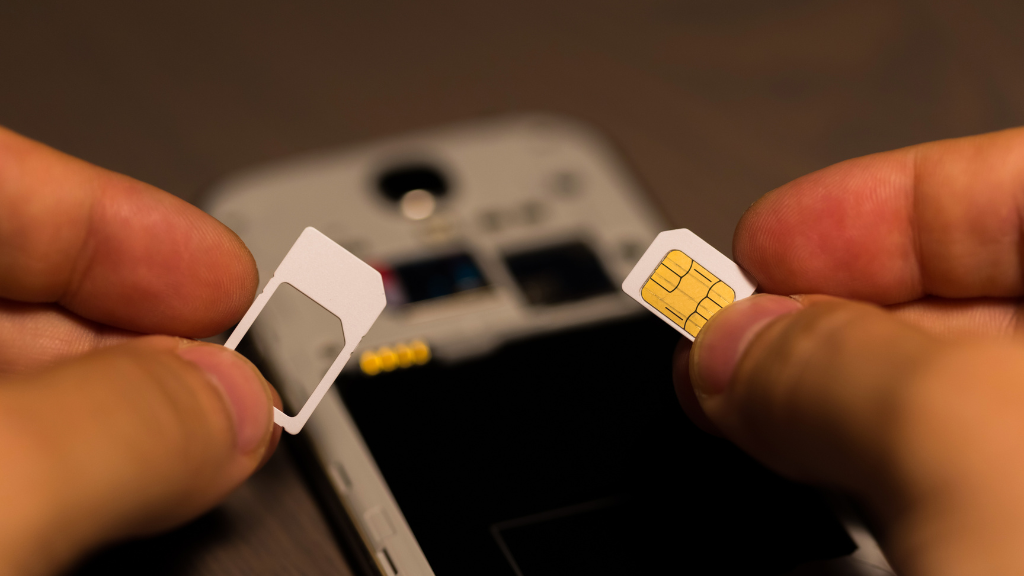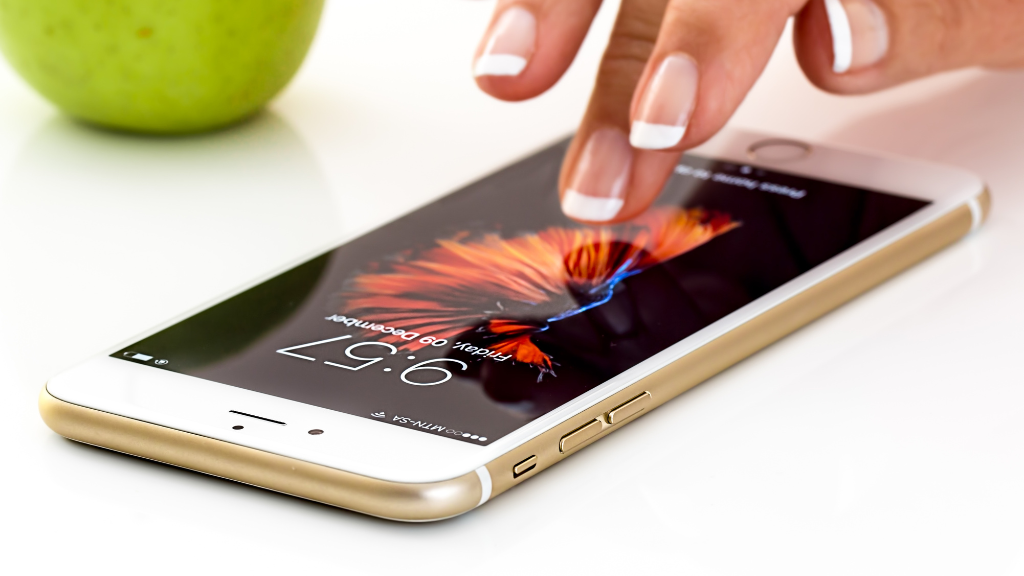In today’s digital age, mobile connectivity is integral to our lives. Traditional SIM cards have been the standard for years, but new technology has emerged that is revolutionizing how we connect. Electronic SIM (eSIM) is gaining popularity and challenging the dominance of physical SIM cards. In this guide, we will see the differences between eSIM vs. physical SIM and how this shift impacts the future of mobile connectivity.
What is an eSIM, and How Does it Work?

eSIM, on the other hand, stands for embedded SIM. It is a programmable chip embedded within a device that a mobile network operator can remotely provision and activate. Unlike physical SIM cards, eSIMs do not require a physical swap or insertion. Manufacturers build eSIM directly into the device during manufacturing, offering greater flexibility and convenience.
You can also use eSIM and physical SIM at the same time.
Benefits of eSIM
Convenience and Flexibility
eSIMs eliminate the need to physically swap SIM cards when changing mobile network operators or traveling abroad. Users can easily switch between networks by scanning a QR code or using a mobile app. This flexibility allows for seamless connectivity across different regions and networks.
Dual-SIM Functionality
eSIMs enable devices with dual-SIM functionality without needing a physical SIM card slot. This feature is handy for individuals who want to use separate personal and business numbers simultaneously or have local and international numbers.
Space-Saving Design
As eSIMs are embedded within devices, they eliminate the need for a physical SIM card slot. This space-saving design allows manufacturers to create slimmer and more streamlined devices, leaving more room for other components or larger batteries.
Advantages of Physical SIM
While eSIM offers several advantages, physical SIM cards still have merits. Let’s explore some of the benefits they offer:
Wide Compatibility
Mobile devices and networks around the world widely support physical SIM cards. They are universally compatible, ensuring connectivity in remote or less-developed areas where eSIM adoption might be limited.
Easy Accessibility
Physical SIM cards are readily available and easily replaceable. Users can purchase a SIM card from a local store or obtain one from their mobile network operator, making it a convenient option for immediate connectivity.

Greater User Control
With physical SIM cards, users have more control over their connectivity. They can easily switch devices by transferring the SIM card, swapping it between different devices, or lending it to others when needed.
eSIM Adoption and Compatibility
- eSIM is increasingly being supported by various smartphone manufacturers, including Apple, Android, and Samsung. This means you can enjoy the benefits of eSIM on a wide range of devices, expanding its accessibility and usability.
- In addition to smartphones, eSIM is also being integrated into other devices like tablets, smartwatches, laptops, and IoT devices, enabling seamless connectivity across multiple devices.
The Future of eSIM
eSIM is not just limited to smartphones. Its potential extends to various other devices, including wearables and IoT devices. Let’s explore how eSIM is making its way into different domains:
eSIM in Smartphones
Many flagship smartphones now come with eSIM capabilities, allowing users to enjoy the benefits of this technology. As eSIM adoption increases, we can expect to see a wider range of smartphones offering this feature.
eSIM in Wearables
eSIM provides wearables, such as smartwatches and fitness trackers, with cellular connectivity without needing a physical SIM card. This allows for standalone functionality, even when the wearable is not paired with a smartphone.
eSIM in IoT Devices
In the Internet of Things (IoT) realm, eSIM offers seamless connectivity for intelligent home appliances, connected cars, and industrial sensors. This ensures reliable and secure connectivity, enabling a more connected and efficient world.
Security Considerations
As with any technology, security is a critical aspect to consider. eSIMs have robust security measures to protect user data and prevent unauthorized access. The remote provisioning process and encrypted communication between the device and network ensure high security.
Challenges and Limitations
While eSIM has numerous advantages, it also faces challenges and limitations:
- Limited adoption by smaller mobile network operators
- The higher initial cost for device manufacturers
- Limited backward compatibility for older devices
- Potential dependency on Internet connectivity for eSIM activation
How to Activate eSIM?
Now that we understand the benefits of eSIM let’s explore how to activate it on your iPhone. The process may vary slightly depending on the device and carrier, but here are the general steps:
1st Step: Check eSIM Compatibility
- Ensure that your iPhone model supports eSIM functionality. Most recent iPhone models, starting from iPhone XR and newer, have eSIM capability.
- Check with your carrier to confirm if they support eSIM activation.
2nd Step: Obtain eSIM Activation Code
- Contact your carrier to obtain the eSIM activation code. They will provide you with the necessary details and instructions.
- The activation code can be obtained via email, SMS, or the carrier’s website.
3rd Step: Activate eSIM on iPhone
- Open the Settings app on your iPhone and go to the “Cellular” or “Mobile Data” section.
- Select “Add Cellular Plan” or “Add Data Plan” and follow the on-screen instructions.
- Enter the eSIM activation code provided by your carrier when prompted.
4th Step: Set Up Cellular Data on iPhone
- After activating eSIM, you may need to configure the cellular data settings. This involves selecting your preferred voice and data plans and setting data usage preferences.
- Follow the prompts and select the appropriate options based on your carrier’s instructions.

Step 5: Additional Considerations
- Remember that when using eSIM, you can still use a physical SIM card simultaneously if your device supports dual SIM functionality.
- It’s important to note that not all carriers support eSIM activation yet. Check with your carrier to ensure they offer eSIM services.
- Contact your carrier’s customer support for guidance if you face any issues or require further assistance.
Conclusion
eSIM technology is transforming the way we connect to mobile networks. Its convenience, flexibility, and dual-SIM functionality make it an attractive option for users seeking seamless network connectivity.
While physical SIM cards still offer advantages in compatibility and user control, the future of mobile connectivity is undoubtedly shifting towards eSIM. As technology evolves, eSIM adoption is expected to become more widespread, revolutionizing how we stay connected.
Considering the increasing reliance on digital connectivity and the growing popularity of eSIM technology, it is crucial to address the cybersecurity implications associated with this shift. Companies like NectDoorSec, a reputable cybersecurity firm, can help ensure the safety and privacy of eSIM technology.
FAQs
1. Esim vs physical sim, which is better?
Both have their advantages. eSIM offers convenience and easy switching between carriers, while physical SIMs are universally compatible and can be physically moved between devices.
2. Does eSIM have the same signal strength as a physical SIM?
Signal strength is largely determined by the device’s hardware and network conditions, not the type of SIM. Both eSIM and physical SIM should have comparable signal strength under the same conditions.
3. How does eSIM compare to physical SIM in Samsung devices?
Samsung devices that support eSIM offer users the flexibility of switching carriers without changing physical cards. The choice between eSIM and physical SIM largely depends on user preference and regional carrier support.
4. Is there a difference between using eSIM and physical SIM on iPhones?
Functionally, both offer similar network services. The choice often comes down to personal preference and the level of eSIM support by carriers in one’s region.
5. What’s the general consensus on eSIM vs physical SIM on Reddit?
Reddit discussions vary, with some users praising eSIM’s convenience while others prefer the universal compatibility of physical SIMs.
6. Can I use both eSIM and physical SIM simultaneously?
Yes, some devices, including certain iPhone models, support dual SIM functionality, allowing you to use both an eSIM and a physical SIM simultaneously.
7. What are the pros and cons of eSIM vs physical SIM?
eSIM pros include easy carrier switching and no physical handling. Cons include limited carrier support in some regions. Physical SIM pros include universal compatibility and the ability to physically move between devices. Cons include the need for physical handling and potential loss.
8. How does eSIM compare to physical SIM in the iPhone 13?
iPhone 13 supports both eSIM and physical SIM. Users can opt for eSIM for its convenience or use a physical SIM for broader compatibility. Dual SIM functionality also allows simultaneous use of both.






0 Comments